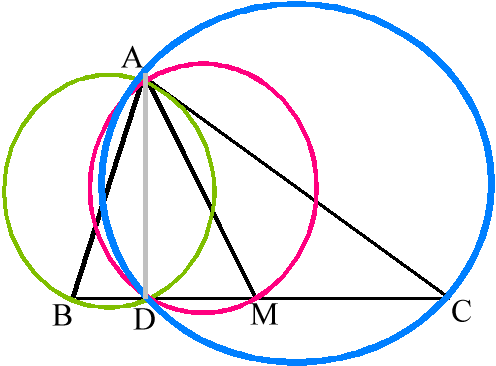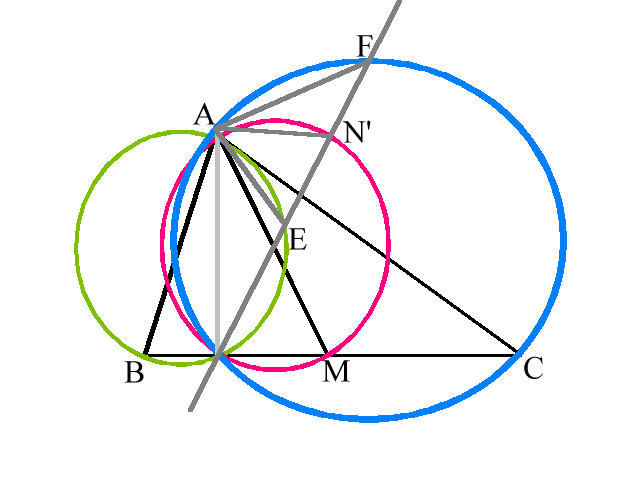
1998 APMO – Problem #4
Let ABC be a triangle and D the foot of the altitude from A. Let E and F be on a line passing though D such that AE is perpendicular to BE, AF is perpendicular to CF, and E and F are different from D. Let M and N be the midpoints of the line segments BC and EF, respectively. Prove that AN is perpendicular to NM.
Solution #1 by Tim Kirchner
Let w 1 be the circle with diameter AB (shown in green), let w 2 be the circle with diameter AC (shown in blue), and let w 3 be the circle with diameter AM (shown in red).

AE^ BE Þ EÎ w 1 and AF^ CF Þ FÎ w 2
Let l be the line containing D, E, F, and let D,N’Î EFÇ w 3.
(i.e. since l intersects w 3 at two points, one is D, call the other one N’)
Since N’Î w 3, we know that AN’^ MN’.
We are given that N is the midpoint of EF, so it suffices to prove that N’=N, that is to say that N’ is the midpoint of EF.
We now draw in the line l, giving us the following diagram:

Similarly, Ð ACB and Ð AFE each subtend arc AD of w 2. Thus Ð ACB = Ð AFE.
Furthermore, Ð AMB and Ð AN’E each subtend arc AD of w 3. Thus Ð AMB = Ð AN’E.
From this, we know that D ABC ~ D AEF, and D ABM ~ D ABN’.
Thus, since M is the midpoint of BC, N’ is the midpoint of EF.
Therefore, N’ = N.
\ NÎ w 3 Þ AN^ MN. ÿ